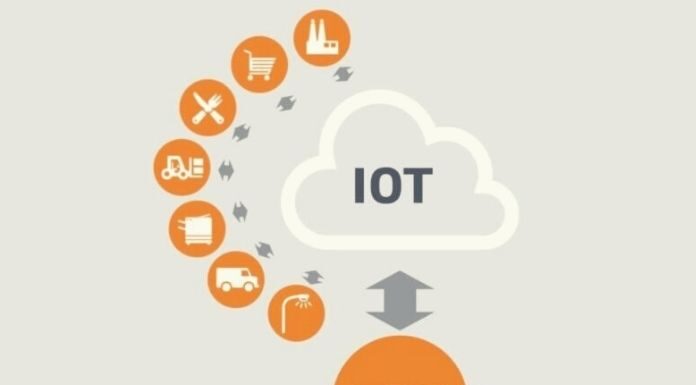In some recent posts, we have talked about ERP and IoT, explaining what it is. Now is the time to put the two together. If the ERP relates to the control and management of all information flows and processes that support company operations, in addition to traditional information, it could be helpful to include in the system a lot of data coming directly from the real world.
This would avoid the manual passage of the data entry, allowing at the same time to have identical elements of knowledge in real-time. The combination of ERP and IoT is a potent approach, especially regarding connecting information systems directly with the production plants, warehouse, and logistics. Of the various operational functions managed through ERPs, the following are particularly suitable for integration with IoT technologies :
- Project management
- Production management
- Plant maintenance management
- Warehouse management
- Sales management
- Distribution management
They allow intervening directly on the processes, linking the information collected to the system logic in areas ranging from retail to inventory planning, from fleet management to logistics.
Fleet Management
Some companies base their business on the rental of vehicles or machinery; in both cases, knowing the state of the equipment is essential to improve efficiency and reduce waste. The adoption of IoT technologies makes it possible to install onboard cars, trucks, and even special machines such as cranes, buckets, excavators, etc., a series of sensors capable of defining in real-time the location in the vehicle and its speed of advance. The state of its systems and even the level of wear of some components.
Combining this type of information with the ERP system allows you to better plan the use of fleets, to timely schedule deferred maintenance and to intervene promptly in the event of potential problems, adjust billing to basic service, highlight incorrect behavior by operators or companies that rent equipment, manage spare parts warehouse more efficiently and much more. The important thing is that the information flows are integrated, and no manual interventions are required to carry out updates; furthermore, reports can be produced to highlight trends, performance, and state of the means.
logistics And Warehouse
The companies that deal with logistics in particular, but also the manufacturing companies, have to do with the handling of goods and the management of warehouses; technology and automation can reduce inventory volume, improve the availability of raw materials, finished and semi-finished products, as well as increase staff productivity. Today we talk about lean production in the face of the possibility of differentiating the offer by creating “tailor-made” products.
This means having a large amount of information to carry out efficient and dynamic planning of stocks and production cycles. The use of technologies that allow the identification and physical location of each element within the entire supply chain also will enable us to know where each piece, component, and finished object is ready to be sold or delivered to the distribution chain.
The 4.0 Factory
The most advanced industrial plants have brought many new tools into the factory: from self-propelled self-driving trolleys to robotic machines capable of performing complex production cycles once only carried out by skilled labor. Today, production is “customizable” to high levels. Still, as for logistics, access to a large amount of data is essential for design, the introduction of changes and improvements during construction, and planning in general production capacity.
The 4.0 factory, via the IoT, is connected to the research and development sector as well as to the workstations on which the designers work – and this interface is bidirectional: on the one hand, machines and robots can be programmed thanks to the design and simulation software, on the other. A range of production line parameters can be measured to give technicians a complete picture of the situation.
That allows both to make manufacturing processes more flexible and improve their efficiency, prevent problems, and reduce unexpected downtime (which saves a lot ). It is also evident that above all, this pushed management of production processes and integration with IoT technologies provides, on the part of ERP systems, the possibility of inserting specific additional functions to create modular components that can be integrated into a platform. (rather than a rigid and monolithic object).
Retail
Web 2.0 and the new purchasing habits of consumers have changed the rules of the game in the retail sector by introducing, alongside the traditional experience in the point of sale, the commercial potential of the Internet. Today people get information on the web before making purchases and often switch from online to offline mode and vice versa (offline mode means a visit to a traditional store).
If ERPs take into account e-commerce and online sales at the level of business processes, it is equally essential to be able to extend the integration between the virtual and real-world to retail by connecting the shop counter to the system; this allows more efficient and punctual accounting management, as well as a better planning of the warehouse both locally and centrally – it is also possible to find any items not available at the moment in a given store, but present in another affiliated shop perhaps not far away.
Finally, the clerks will access much more information to improve the customer shopping experience. As for logistics, the IoT makes the difference thanks to the automated tracking of goods but, with a view to future-oriented retail, more can be done: for example, have sensors that take customer measurements (we are talking about the clothing sector) and pass this data to the factory for the production of a bespoke garment – all integrated within the ERP that acts as the glue of all the processes.
Also Read: DATA SCIENCE TOOLS: THE TOOLBOX OF THE DATA SCIENTIST TEAMS


